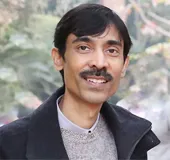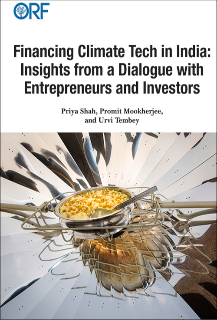
The year 2021 is important for Delhi. In this year, the fourth master plan for guiding future growth and development in Delhi over the next 20 years is scheduled for implementation. This plan will also provide policy proposals for overcoming various problems existing in the city.
The draft plan is currently under preparation. According to available information, several studies have been conducted to understand the conditions prevailing in the city. In addition, consultations with a wide range of stakeholders are underway to know the requirements of people as well as their concerns. An interactive microsite, namely “citizen engagement portal for MPD 2041” has also been developed for inviting public opinions. It is expected that the inputs generated in this manner and lessons learned will help in formulating a realistic plan.
The fourth master plan for guiding future growth and development in Delhi over the next 20 years is scheduled for implementation.
Some details of the upcoming plan are available in public domain. The information shows that greater attention will be paid to the improvement of the following six urban sectors.
The first sector pertains to the environment of Delhi, since environmental conditions are deteriorating on a number of fronts. This issue will be addressed by protecting the forests and greenery, cleaning Yamuna river, its floodplain and drains, reviving water bodies, and utilising wasteland and abandoned sites. Activities such as greening of building rooftops, vertical greening, and landscaping would be promoted. The effort will be to maintain a blue-green continuum across the city.
Local economic development is identified as the second important sector for reform. In this respect, the plan is to create new work opportunities in existing and proposed hubs and offer a better working environment. This goal is expected to be achieved by providing incentives for development of clean and green economies, pertaining to cyber, knowledge, R&D, finance, industry, recycling, etc., and improvement of marketing and trading areas. The issue of unorganised sector is also expected to be addressed through design of vending zones.
For improvement of heritage, culture, and public life — the third sector — heritage precincts will be delineated and local area plans will be prepared. Further, safety in public areas will be ensured through illumination and provision of infrastructure. Night life is also expected to be promoted by creating required services and facilities.
The upcoming master plan is expected to offer proposals for improving the quality of life in Delhi. With regard to this fourth sector, there is a possibility of rental and non-ownership housing — such as serviced apartments, dormitories, hostels — receiving a boost. This step will be beneficial for migrating population, especially working women, and students. The existing housing and social infrastructure in planned and unplanned areas is also expected to be improved through retrofitting for structural and fire safety as well as greening. Mixed use of land and buildings will be encouraged to reduce travel time between home and work, and for accessing amenities.
Further, for improvement of mobility — the fifth sector — plans will be formulated for facilitating safe walking and cycling. The challenges posed by a growing number of motor vehicles and vehicular pollution will be addressed through congestion pricing, parking management, development of mobility corridors at strategic locations, and provision of electric vehicle charging infrastructure. The ultimate goal will be to attain low carbon mobility.
Finally, priority will be given to development of resilient infrastructure. In the water sector, this will be seen in the form of preparation of water budgets, reuse of waste water, and formulation of demand management strategies. With regard to solid waste, management plans will be prepared at the level of a ward, and emphasis will be on decentralised waste management and development of waste to wealth ecosystem. To mitigate the heat island effects, flooding, and disasters, appropriate strategies will be devised, including development of green areas and improvement of surface drainage systems. Digital infrastructure is also expected to be upgraded and expanded in a big way.
The challenge for the plan preparation agency, i.e., Delhi Development Authority, will be to complete the proposed tasks successfully.
Time will tell by when and how many of the above-mentioned plan proposals will be finalised and implemented properly. While it is still early to appraise the upcoming plan, based on available information it seems that many of the preliminary ideas have been derived from the previous master plans for Delhi. The repetition of proposals is obvious and has occurred due to non-implementation or incomplete implementation in the past. The challenge for the plan preparation agency, i.e., Delhi Development Authority, will be to complete the proposed tasks successfully.
The adverse impacts of previous inefficiencies in plan preparation, implementation as well as its monitoring are observed in almost every urban sector, whether it is housing, economy, heritage, mobility, infrastructure, or environment. For example, the spatial expansion of urbanisation in the rural hinterland of Delhi has caused numerous problems in the lives of village communities. Also, more than 30 percent of Delhi’s population is living in substandard areas, which are characterised by abysmal housing, water, and sanitary conditions. On safety and security parameters too, the city does not fare very well. Also, there is hardly any thinking or action on the issue of noise pollution in the city. These are only a few examples of adversities.
Therefore, if the goal of making Delhi a better city is to be achieved, the problems experienced in preparation of a good plan as well as its effective implementation must be resolved.
Attempts have been made to highlight the aspects to which attention should be paid. These pertain to the following:
• Time spent in preparation and notification of the plan
• Availability of geospatial and revenue data as well as cadastral maps
• Public consultation process
• Population and infrastructure projections
• Managerial, financial, and monitoring capabilities of plan implementation agencies
• Planning proposals for deprived communities
• Cost estimates for plan implementation
• Planning for health emergencies
The future vision should be to make Delhi a people’s city. It should be people-friendly, inclusive, equitable, responsive, liveable, safe and secure, healthy, clean and green, smart, innovative, connected, prosperous, resilient, sustainable, and accountable. All planning proposals in the upcoming plan should be designed accordingly.
The views expressed above belong to the author(s). ORF research and analyses now available on Telegram! Click here to access our curated content — blogs, longforms and interviews.




 PREV
PREV


